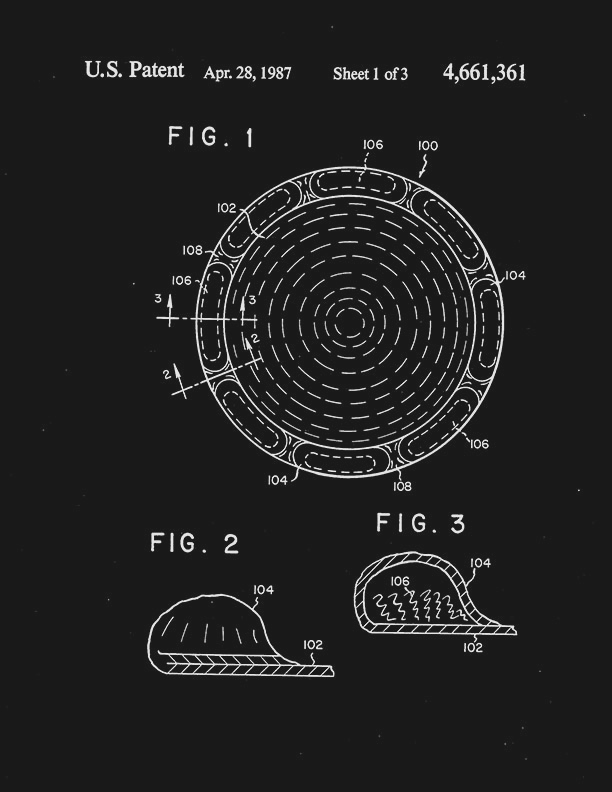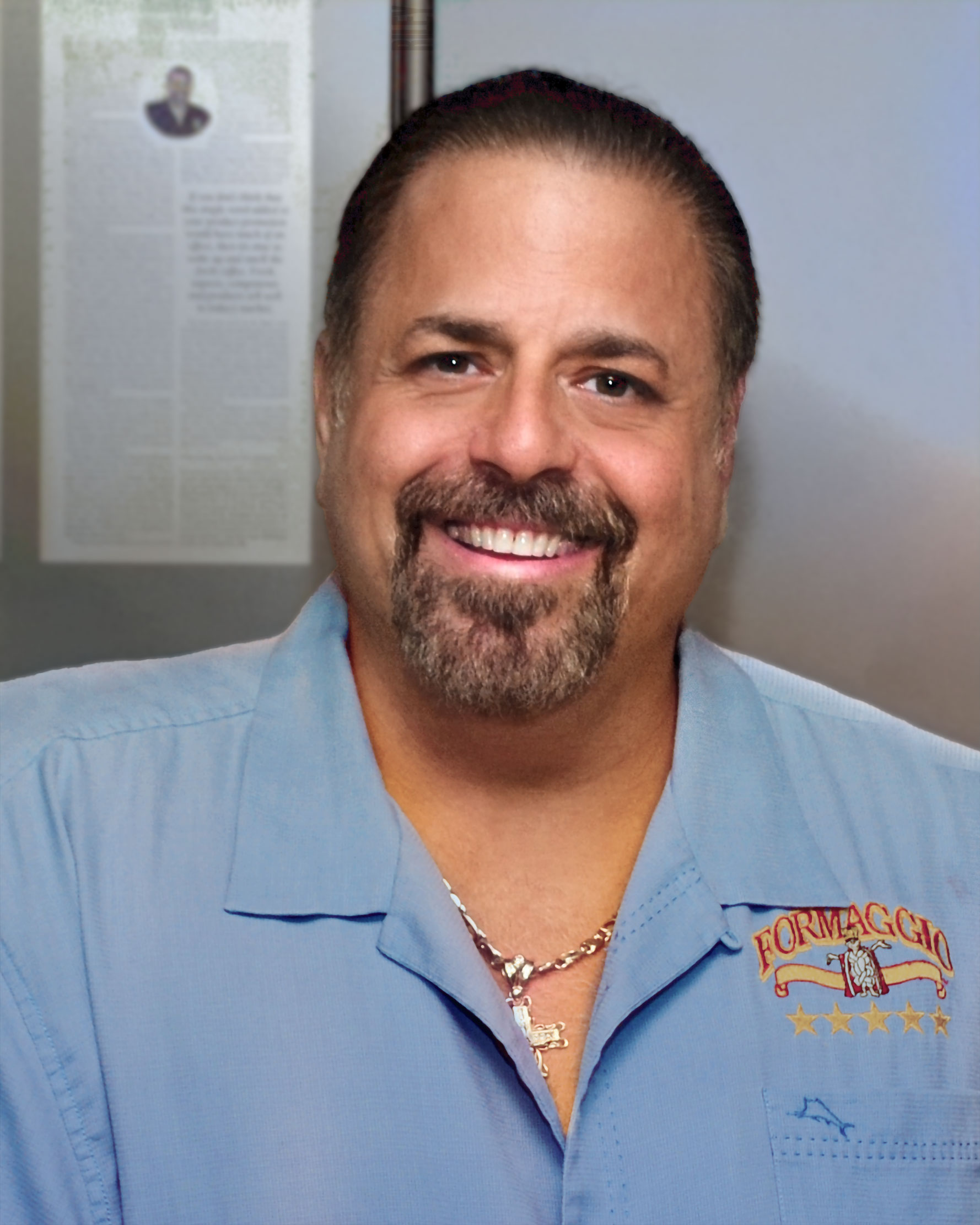WATCH FACTS
Watch the New York City news footage that tracks the story of the moment Anthony Mongiello’s patented invention, – having previously been rejected by Pizza Hut twice – becomes an American food phenomenon and the legal struggle that accompanied it.
PATENT FACTS
U.S. Patent #4,661,361 published and issued to Anthony T. Mongiello in 1987. This is the actual patent he sent to Pizza Hut, twice.


Anthony T. Mongiello
A DELECTABLE REVELATION
(or, A Brief Synopsis of the Origin Story behind America’s Modern Apple Pie – Stuffed Crust Pizza)
– by JG Riley
Picture it, my friends. The year is 1980, and the scene unfolds in the vibrant borough of Brooklyn, New York. Our spirited protagonist, an 18-year-old named Anthony T. Mongiello, finds himself facing a gastronomic challenge of epic proportions. It was the mother of his girlfriend at the time who tasked him with creating a pizza pie. Now, Anthony had never attempted such a feat before, but this was Bensonhurst, a place where pizza-making was an art form ingrained in the very fabric of life. Armed with the necessary ingredients and two historic balls of dough, Anthony embarked on a mission to impress.
To his surprise and delight, as the pizza cooked in the oven, the crust swelled to an unusually large size. Curiosity piqued, Anthony cut open the crust and made a remarkable discovery—it was hollow. This unexpected revelation ignited a spark of inspiration in his entrepreneurial mind. He envisioned a new pizza-eating experience, one that involved filling the crust with delicious ingredients. And thus, the concept of Stuffed Crust Pizza, America’s modern apple pie, was born.
Driven by instinct and a family legacy of entrepreneurial spirit, Anthony embarked on a year-long journey of experimentation. He honed his crust-making methods and tested various combinations of fillings. As his ideas took shape, he couldn’t help but recognize the marketing potential of his creation. However, when he approached Pizza Today magazine for coverage, they showed little interest. Undeterred, Anthony sought ways to protect his valuable idea. He borrowed money, working tirelessly to repay the loan while juggling a car service job and a role in construction.
Understanding the importance of safeguarding his innovative pizza-making method, Anthony delved into patent requirements, trademark laws, and sought advice from lawyers. He was following in the footsteps of his father and grandfather, who were inventors within the Italian food industry in the United States. Anthony realized that his invention was not merely a recipe, but a unique method. With unwavering determination, he pursued a United States “Method Patent.” As fate would have it, his invention solved a problem that had long plagued the industry—wasted crusts left behind in pizza boxes. By stuffing the crust, Anthony’s method made more of the pizza edible, reducing waste. In 1987, he was awarded U.S. Patent #4,661,361.
With his patent in hand, Anthony reached out to major players in the industry, such as Dominos and Little Caesar’s, but it was Pizza Hut that showed interest in his method. However, after reviewing it twice, Pizza Hut ultimately rejected his creation. Anthony’s American dream appeared to evaporate into thin air. Or so he thought.
In 1995, a phone call both surprised and infuriated Anthony. A friend congratulated him on the sale of his Stuffed Crust Pizza, which he saw advertised during the March Madness promos on TV. Pizza Hut had launched a massive marketing campaign, utilizing Anthony’s patented method and securing endorsements from prominent figures like Donald Trump and Ringo Starr. Anthony couldn’t believe his eyes. Pizza Hut had put his method into production without his consent.
Initially seeking an explanation and compensation from Pizza Hut, Anthony received a meager offer to “go away.” Refusing to accept such a paltry sum, he remained determined to seek justice. Thus, he pursued legal action against Pizza Hut, alleging damages amounting to a billion dollars. The media covered the story extensively, shedding light on the behind-the-scenes setup of Stuffed Crust Pizza in Pizza Hut kitchens. However, the judge decided to rule in favor of Pizza Hut, refusing a jury trial and opting for “summary judgment.” The absence of a final “slicing” step in Anthony’s patent became the basis for the judge’s decision. This ruling left Anthony disheartened, questioning the significance of slicing preferences in determining patent infringement.
As Anthony stood outside the courthouse in downtown Manhattan, he contemplated his next steps. Frustrated yet resilient, he chose to share his story, seeking public support. While his frustration churned, he couldn’t resist the allure of his own creation—Stuffed Crust Pizza, a testament to his ingenuity and culinary skill. To this day, he continues to enjoy sharing it with family and friends, savoring the triumph of his delicious, next-level creation.
Anthony’s achievements did not go unnoticed. In 2014, representatives from The Smithsonian visited his Catskills office, expressing interest in acquiring his original tools, materials, and artifacts for their food technology museum. Anthony T. Mongiello’s story has been shared through podcast interviews, radio discussions, and an award-winning documentary film, solidifying his claim as the inventor of Stuffed Crust Pizza with U.S. Patent #4,661,361.